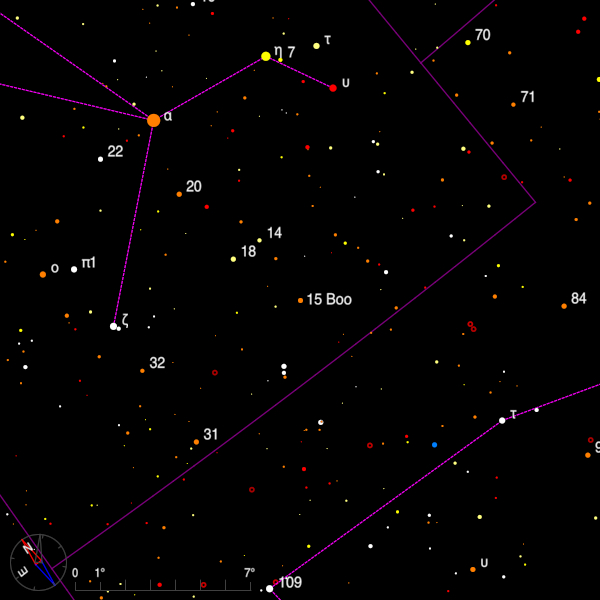March 2022 - Double Star of the Month
15 Boo (14 14 50.85 +10 06 02.2) is a naked-eye star about 9 degrees due south of Arcturus. Discovered as a close double by Gerard Kuiper in 1936, it has shown little motion since that time. I measured it on 3 nights in 2001 using the 8-inch Cooke refractor at Cambridge and got a relative position of 119 degrees, 1".1. The Washington Double Star Catalog (WDS) indicates that in 2015 the position was 111 degrees and 0".8.

The difficulty of resolving this pair is exacervated by the difference in magnitude between the components: 5.4 and 8.4. In 2020, Dr. Marco Scardia using the 1-metre Epsilon telescope at the Plateau de Calern near Nice, found that B was itself a close visual pair: 8.4, 10.0, 175 degrees, 0".2.
In an area just north of a line drawn between theta and iota Centauri there is a rich profusion of visual double stars. One of the more interesting is HWE 28 (13 53 32.75 -35 39 51.2) a binary whose components shine at magnitudes 6.3 and 6.4. The period is 363 years and at the present time the stars are 1" apart in PA 317 degrees. An 8.7 magnitude star lies 68" away in PA 7 degrees and two much fainter stars can be seen - a 12.3 at 150 degrees 28" and a 14.8 at 133 degrees 38".

Just 1 degree due west is HWE 94 (13 48 55.07 -35 42 15.1) where the components are 6.6 and 10.2 and the separation 12" in PA 0 degrees. The HWE stars were found by Herbert A Howe, who started his career at Cincinnati Observatory, and went on to become Director of the Chamberlin Observatory which was attached to the University of Denver, Colorado. It boasted a 20-inch Clark refractor.
Bob Argyle - Double Star Section Director